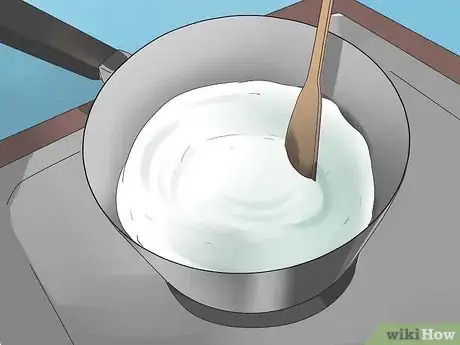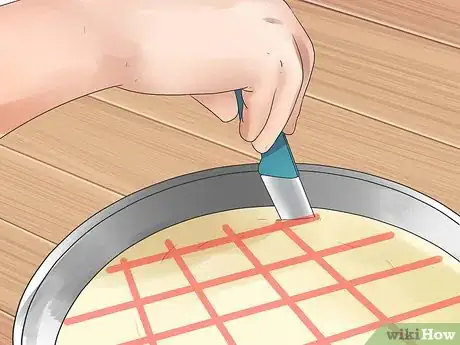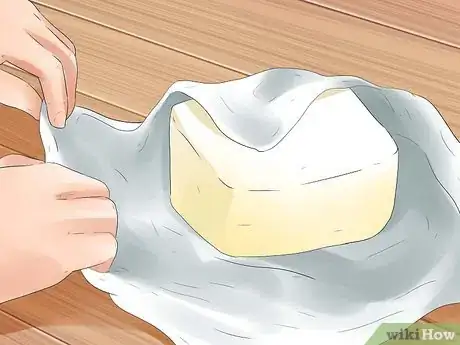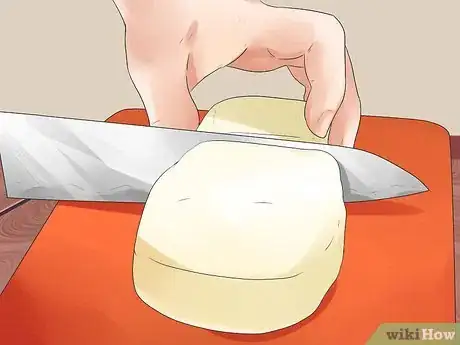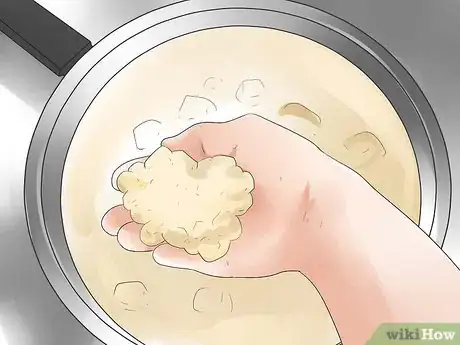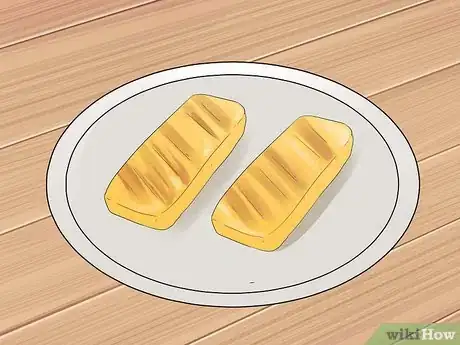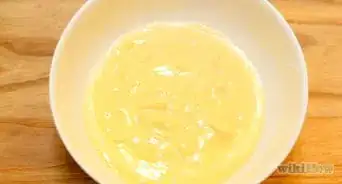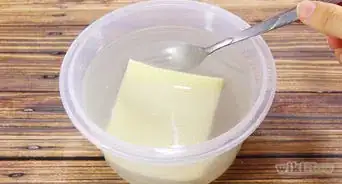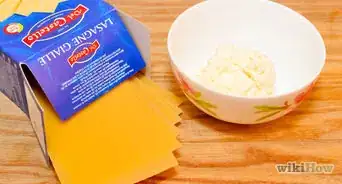wikiHow is a “wiki,” similar to Wikipedia, which means that many of our articles are co-written by multiple authors. To create this article, 21 people, some anonymous, worked to edit and improve it over time.
This article has been viewed 137,313 times.
Learn more...
Haloumi cheese originates from south eastern Europe, and is particularly well known in Greek, Cypriot, and Turkish cuisines. Sometimes known as "squeaky cheese", this cheese variety is a simple home-style cheese that is known for having a very high melt temperature due to its low acid content. Since it seldom melts, it also allows for frying in a variety of styles.
Ingredients
The yield varies according to the quality of milk, but these ingredients will result in approximately 2kg/70.5 oz of cheese.You can easily make a half batch and the method is the same.
- 5 litres/approx. 10 US pints (5,000 ml) of full cream milk––goat's milk is highly recommended (you need un-homogenized, ideally unpasteurized (or at least low temperature pasteurized) milk)
- 6 mls/0.2 fl oz of rennet (vegetarian rennet works fine, but junket tablets are not recommended), mixed in 1 tablespoon (14.8 ml) of pre-boiled and chilled water (this method removes potential chlorine that will destroy the rennet
- 3 tablespoons rock or sea salt (not iodized salt, as iodine destroys rennet)
- Optional extra: dried mint to taste
Steps
Making the Curds
-
1Heat the milk to 34ºC/93.2ºF. Add the rennet, stirring well.
-
2Cover the milk with cling film, or the pot lid, if available. Set in a warm place, wrapped in towels to keep it warm.Advertisement
-
3Let sit 30 minutes until a "clean break" is formed. A clean break is when the curd separates cleanly when you insert a knife and pull it gently to one side. If it's similar to scrambled eggs, you are close, but not quite there; keep it warm and test again in 10 minutes. (See tips).
Processing the Curds
-
1Using a knife, cut the curds into 1 centimeter (0.4 in) cubes. Let rest for 15 minutes, then agitate the curds with a slotted spoon. Let rest another 15 minutes.
- Heat the pan gently to 38ºC/100.4ºF, rest another half an hour. During this process the curds will expel more whey.
-
2Transfer the curds into the colander lined with a tea-towel or cheesecloth. This is easiest done with a slotted spoon, mesh-straining spoon, or a sieve. Do not throw away the surplus whey––put the lid or cling film onto the pan again and set the whey aside after all curd has been removed.
-
3Wrap the Haloumi in the cloth. Place a large heavy weight on a saucer, then place this on top of the curds to compress them and expel more liquid. This will take at least 1 hour.
- 5kg / 11lb is a recommended mass. A large pot full of water works well. Pressing the weight to expel more whey does speed up the process, but should not be done to excess as you will split the curds and make them crumble.
-
4Slice the curd mass into wedges or thick slices of haloumi. Aim to cut slices that will fit easily into your storage container.
Preparing the Whey and Adding Flavour
-
1Heat the whey to simmering and add the salt. At this stage, any remaining milk proteins will knit together and rise to the top. Skim this into a bowl.
- The ricotta is an additional treat to eat with sugar and cinnamon to taste, but for this quantity, you may only get 4 or 5 tablespoons worth.
-
2Add the haloumi slices. Simmer until the slices float, then poach for another 15 minutes. After poaching, drain on a clean cake-cooling rack.
-
3In your sterilized storage container, add the optional mint (to taste) and some whey to fill one-quarter of the container. Add the slices, then top with whey until the cheese is fully covered. Agitate the container gently to ensure that the mint is evenly dispersed.
Storage and Serving
-
1Store the cheese in the refrigerator until required. Let it at least sit overnight if you added the mint; this will allow the flavour to penetrate.
-
2Serve. While the haloumi cheese can be eaten as it is, it can also be served in one of the following ways:
- Cut the cheese into slices or cubes, then fry haloumi in a little olive oil until crisp and browned.
- Fry as above, then add some fresh herbs and cherry tomatoes into the pan and briskly cook until tomatoes are hot and just starting to break open. Season with black pepper, a lemon wedge and a little salt to taste. Great with a good bread such as Turkish bread to sop up the juices.
- Use fried haloumi in tapas or antipasto style snacks. It is also a delicious vegetarian alternative to white meats.
Community Q&A
-
QuestionCan I use lemon juice as an alternative to rennet?
 Community AnswerNo, it is not recommended.
Community AnswerNo, it is not recommended.
Warnings
- As with all dairy and cheese production, everything used to process and cook the cheese should be spotlessly clean and sterilized before use.⧼thumbs_response⧽
Things You'll Need
- Large pan to hold milk
- A warm place and towels to insulate the pan
- Accurate thermometer
- Colander lined with a tea-towel or cheesecloth
- Measuring utensils
- Cake cooling rack
- Sieve, slotted spoons and a knife
- Storage container
